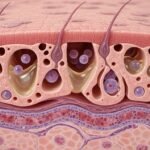Your body is full of amazing parts that work quietly behind the scenes. One small but very important part is the canaliculi. These are tiny channels that you can’t see, even with a normal microscope. But they help important things flow inside your body every single day. From helping bones stay strong to moving tears in your eyes, canaliculi may be small, but they do big work. Most people have never even heard of them, but these little passageways are crucial for health, comfort, and how our bodies function normally.
In this easy-to-understand article, we’ll explore what canaliculi are, where they’re found, and why they matter. If you’ve heard this word in a biology class or while Googling how bones work, you’re in the right place. We’ll also talk about some cool facts, health conditions related to canaliculi, and questions that students or curious readers often ask. By the end, you’ll not only know what canaliculi are—you’ll understand how they help keep your body balanced every single day. Let’s take a closer look at one of the body’s most overlooked but fascinating microstructures.
What Are Canaliculi?
Canaliculi (singular: canaliculus) are very tiny channels or passageways found in your body. The name comes from Latin, meaning “little canals.” And that’s exactly what they are—tiny tunnels. These canals connect cells, carry fluids, or allow communication between small parts of tissues. You can think of them like backroads or tiny highways inside your body. These channels are especially important in bone and eye tissues, where they allow things like nutrients and waste to move in and out of cells. Without canaliculi, your body would struggle to move small substances where they need to go.
Where Do You Find Canaliculi in the Body?
You can find canaliculi in several areas of the body, but the most talked-about places are bones, the eyes, liver, and kidneys. In bone tissue, canaliculi connect bone cells called osteocytes. These channels let the cells talk to each other and share nutrients. In the eyes, especially near the tear ducts, canaliculi help drain tears from your eyes into the nasal passage. In the liver and kidneys, canaliculi help move bile or urine through very thin pathways. No matter where they are, their job is similar: to connect and carry important materials from cell to cell.
Canaliculi in Bones: Keeping Your Skeleton Healthy
In your bones, canaliculi play an important role. Bone is not just a hard surface—it’s alive and full of active cells. These cells, called osteocytes, live inside small spaces known as lacunae. The canaliculi connect these spaces, forming a network. Fluids, nutrients, and even small messages travel through these canals from one cell to another. This keeps all your bone cells fed and alert. When you exercise or need to heal from an injury, canaliculi allow bone cells to respond fast. This network is part of what makes bones so strong and smart at the same time.
Canaliculi in the Eyes: How Tears Drain

Tears don’t just fall down your face—they mostly drain through your canaliculi. These are tiny tubes located in your eyelids, near the inner corners of your eyes. When you blink, tears move toward these small openings called puncta. From there, canaliculi carry the tears into a tube called the nasolacrimal duct, which drains into your nose. That’s why your nose runs when you cry! If these canaliculi get blocked, tears can’t drain properly. This can lead to watery eyes or infections. These small tubes help keep your eyes comfortable by managing the flow of tears.
Bile Canaliculi in the Liver
In the liver, bile canaliculi are thin channels that carry bile from liver cells to the bile duct. Bile is a yellow-green fluid that helps your body digest fats. These canaliculi collect bile between the liver’s many small cells and move it through a network of tubes. If these canals don’t work right—because of disease or infection—bile cannot drain properly. That can cause liver problems or digestion trouble. Even though these liver canaliculi are super thin, their job is extremely important in keeping your digestive system working as it should.
The Role of Canaliculi in the Kidneys
The kidneys filter waste from your blood and make urine. Inside the kidneys, there are many tiny channels that help move fluids. Some medical experts consider certain kidney tubules or ducts canaliculi because they are so thin and tube-like. These passageways help blood get cleaned and send waste through different sections of the kidney until it becomes urine. While we don’t talk as much about canaliculi in kidneys as we do in bones or the liver, their role in moving helpful fluids or removing waste is still very important for your health.
Why Are Canaliculi So Important?
Even though you can’t see canaliculi with your eyes, they are essential for your health. Imagine if the cells in your bones couldn’t talk to each other or receive nutrients. Your skeleton would grow weak and break easily. Or think about what would happen if tears couldn’t drain out of your eyes. You’d get infections or constant tearing. The same goes with bile in your liver. These little canals are invisible heroes. They do their job quietly but help keep your systems running smoothly every single day. Without them, normal life functions would break down quickly.
What Happens When Canaliculi Get Blocked?
Blocked or damaged canaliculi can cause a variety of health problems. In the eyes, for example, blocked tear canaliculi can lead to constant watery eyes, infections, or swelling. This condition is often treated with warm compresses, or in some cases, surgery. In the liver, blocked bile canaliculi can cause bile to build up, leading to conditions like cholestasis or liver disease. Blocked pathways in the bones can limit how cells share nutrients or repair damage, which over time could lead to weaker bones. Doctors use imaging tools or eye exams to check the health of canaliculi when symptoms appear.
How Are Canaliculi Studied in Science?

Researchers study canaliculi using special microscopes and imaging tools. Because these channels are so small, only advanced technology can help scientists see them clearly. In bones, scientists use 3D imaging to explore how canaliculi connect osteocytes. In the liver and kidneys, they use dyes and tracers to track how bile and urine move through microscopic paths. Studying canaliculi helps researchers understand how diseases start, spread, or affect body systems. It also helps in designing medicines that need to move through these tiny spaces. Even though they are small, canaliculi are a big part of medical research.
Can Canaliculi Repair Themselves?
The body is amazing at healing. In many cases, canaliculi can repair themselves if the damage is minor. For example, if your tear canals get blocked from swelling or allergies, the issue may fix itself with proper care. In bones, canaliculi can shift or grow as bones rebuild or react to stress over time. However, some damage is more serious. Scar tissues, infections, or long-term diseases can block canaliculi permanently. When that happens, medical help may be needed—like surgery to open tear ducts or treatment for liver function. Early detection can make a big difference in outcomes.
Differences Between Canaliculi and Capillaries
People sometimes confuse canaliculi with capillaries, but they are not the same. Capillaries are the smallest blood vessels in your body. They carry blood that brings oxygen and removes waste. Canaliculi don’t carry blood. Instead, they move fluids like bile, tears, or the nutrition found in bone fluid. Capillaries are part of the circulatory system, while canaliculi are part of specific tissues like bone, liver, kidney, or eyes. Both are tiny and important, but they have very different jobs. Knowing the difference helps you better understand your body’s amazing design and how it takes care of itself.
Conditions Linked to Canaliculi Problems
Several health problems are linked to issues with canaliculi. Blocked canaliculi in the eyes can lead to chronic watery eyes or infections. In the liver, canaliculi problems may lead to bile buildup, causing itching, tiredness, or yellowing of the skin known as jaundice. In bones, damage or poor construction of canaliculi could make healing slower after a break. One rare condition that affects these channels in the liver is primary biliary cholangitis, an autoimmune disease. While these conditions affect different organs, they all prove one thing—when canaliculi don’t work right, the effects can be big.
Fascinating Canaliculi Facts You Might Not Know

Let’s explore some cool facts about canaliculi. Did you know bone canaliculi form a network like roads in a city? They help deliver nutrients across long distances in the skeletal system. Another fun fact is that each eye has two tear canaliculi—one for the upper eyelid and one for the lower. And in the liver, bile canaliculi carry out their job so well that even a small blockage can cause big changes in digestion. Knowing these small details can amaze your friends and help you feel more informed next time you visit the doctor or take a biology class.
How Avoiding Infections Can Keep Canaliculi Healthy
If you want to keep your canaliculi healthy, start by taking good care of the areas they support. For tear canaliculi, wash your hands before touching your eyes and avoid rubbing them too much. For bone health, eat a balanced diet and stay active to keep osteocytes and canaliculi working strong. If you have conditions like diabetes or liver problems, manage them properly with your doctor’s help. Regular health checkups can also catch small problems early. Healthy habits today can protect even the smallest parts of your body from bigger problems later.
FAQs
1. What are canaliculi made of? They are tiny tunnels formed within tissues like bone, liver, or the eye. They have walls made from cells and carry fluids or signals.
2. Do canaliculi have anything to do with blood vessels? No, canaliculi are not blood vessels. They are different microscopic channels that move fluids like tears or nutrients—not blood.
3. Can blocked canaliculi cause infections? Yes. When canaliculi are blocked, fluid builds up and can lead to infections, especially in the eyes and liver.
4. Are canaliculi only found in humans? No. Many animals, especially those with bones or similar organs, have canaliculi too.
5. How do doctors treat canaliculi problems? Treatments depend on the organ. Doctors may suggest warm compresses, surgery, or medication depending on the blockage or cause.
6. Can you see canaliculi without a microscope? No. They’re far too small to see with the naked eye. High-powered tools are needed to view them clearly.
Final Thoughts
Even though canaliculi are tiny, they do big things. They help bones stay strong, allow tears to drain, move bile in the liver, and more. Without them, your body wouldn’t work right in many important ways. Now that you know what canaliculi do, where they’re found, and why blockages can be a problem, you have a new appreciation for the hidden systems that keep us going. So next time you blink, stretch, or enjoy a meal, you can thank your canaliculi for helping make those actions smooth and healthy. Stay curious, care for your body, and remember—it’s the smallest structures that often have the biggest impact.



